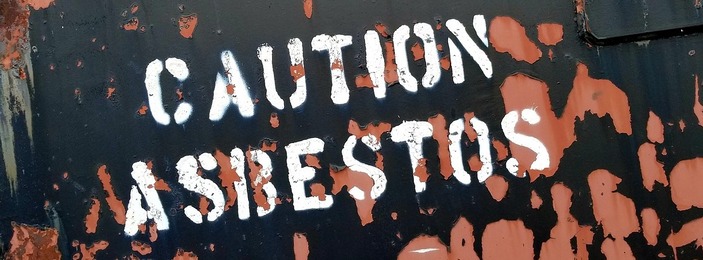
01 Sep, 2023/ by Surveyor Local /News
Many people of a certain age will remember when asbestos was sold as a wonder material that could cure all the ills of protecting buildings from fire or severe heat. Astoundingly, because it showed up well on early colour films, flakes of it were used as snow in movies like The Wizard of Oz.
It was only later that it was found to be a high-risk danger to human health, causing mesothelioma (more popularly known as asbestosis), which is a form of lung cancer that is triggered by inhalation of the small asbestos fibres.
Procedures were put in place to manage its removal, with authorised companies formed to specialise in managing asbestos in all its forms from whatever location.
White asbestos was finally banned in 1999 for use in the construction new buildings and renovations, while blue and brown asbestos had had a ban in place since 1985 in the United Kingdom.
There are three familiar types of asbestos:
- white asbestos (chrysotile) - this is the most familiar asbestos, and it was used in roofs, ceilings, floors, chimney linings and walls on many structures from private homes and schools to offices and public areas (such as railway stations) as a way of containing any fire that broke out
- blue asbestos (crocidolite) - often used in a spray form, it was commonly used to coat and lag hot pipes and in industry where high heat needed to be protected. It was also used in the creation of some insulation and construction materials
- brown asbestos (amosite) - most often used for thermal insulation and lagging boilers and pipes
Asbestos is a naturally-occurring mineral that has crystallised to form the dense fibres. It's easy to see why it was acclaimed as being a wonder material, because it is heat- and fire-resistant, it has an incredible strength and is light, it won't dissolve in water, and it can withstand high degradation of chemicals.
Asbestos in its purest form, and in an undamaged state, is not deemed harmful. It is only when it is broken that the dangerous fibres are released. It is this that makes the removal of any such material such a hazardous enterprise and why it must be left to the professionals.
If you suspect or find asbestos in your home, you should contact your local authority immediately for advice on what to do next. The government has provided a helpful local authority finder.
But what about checking your prospective purchase of a home for the existence of asbestos?
Identifying asbestos in your planned new home
When you're looking at properties for a move, it's advisable to appoint a qualified chartered surveyor to perform either a Homebuyers Report or a RICS Level 3 Survey, which will detail any concerns with any aspect of the house (the Level 3 Survey is much more detailed and is generally recommended for properties constructed before 1900 or of an unusual construction or use of materials or is listed, but can be applied to any home).
The surveyor will observe and check accessible points for any suspicion of the existence of asbestos. They will not try to remove any of it or attempt to test it in any way as this could create a hazard for the surveyor and those currently living there.
If it is suspected that asbestos is present, the surveyor will highlight in the report with a recommendation that it be assessed by a professional immediately, along with an estimated cost of the work to be carried out.
This can be very worrying, naturally, so what you need to do as a matter of course is to order a suitable survey for your planned purchase that has a RICS-qualified chartered surveyor who knows the local area well, including other instances nearby where asbestos has been found.
And that's where it really is worth contacting Surveyor Local!
Surveyor Local will provide a quote that will not change - what you are quoted is what you pay.
You'll get one of over 100 fully-qualified RICS surveyors, who is local to the property you are buying so they will know the area and bring that knowledge to their assessment and their analysis of the issues with the new home.
Next-day bookings are usually available, and your appointed surveyor will look after arranging access to the property with the estate agent and the seller. Once the survey is complete, they will send you a PDF copy of the report by email.
Call to get your survey quote started, or to discuss your concerns with the acquisition of your planned property.
Or you can get a quick quote, using Surveyor Local's easy-to-use quote generator. Simply input your name, postcode, email address, phone number and an approximate value of the property (usually the agreed price), and we'll give you an instant quote for the work (with an email copy).
We'll do the rest once you confirm your acceptance of the quote.
